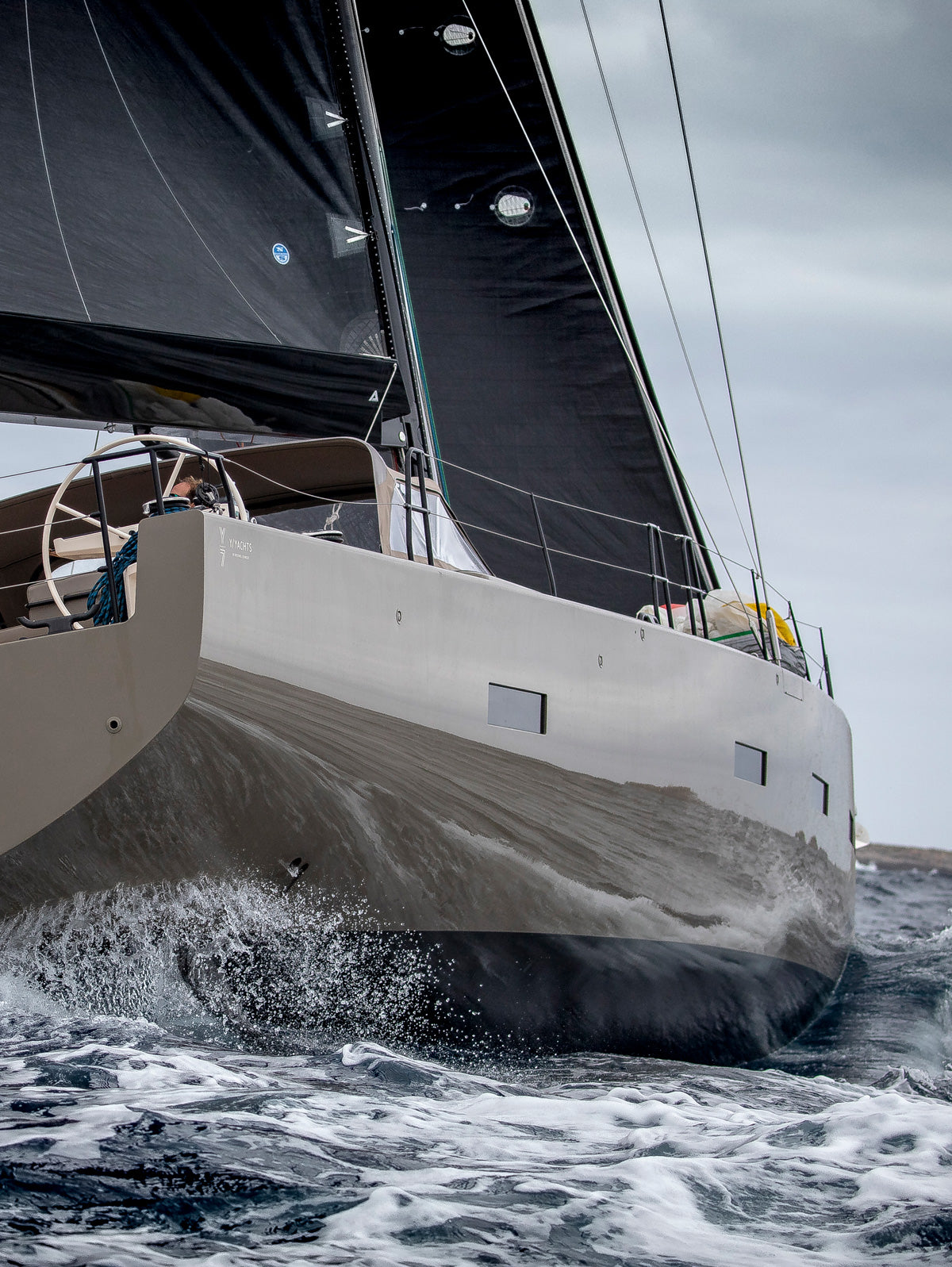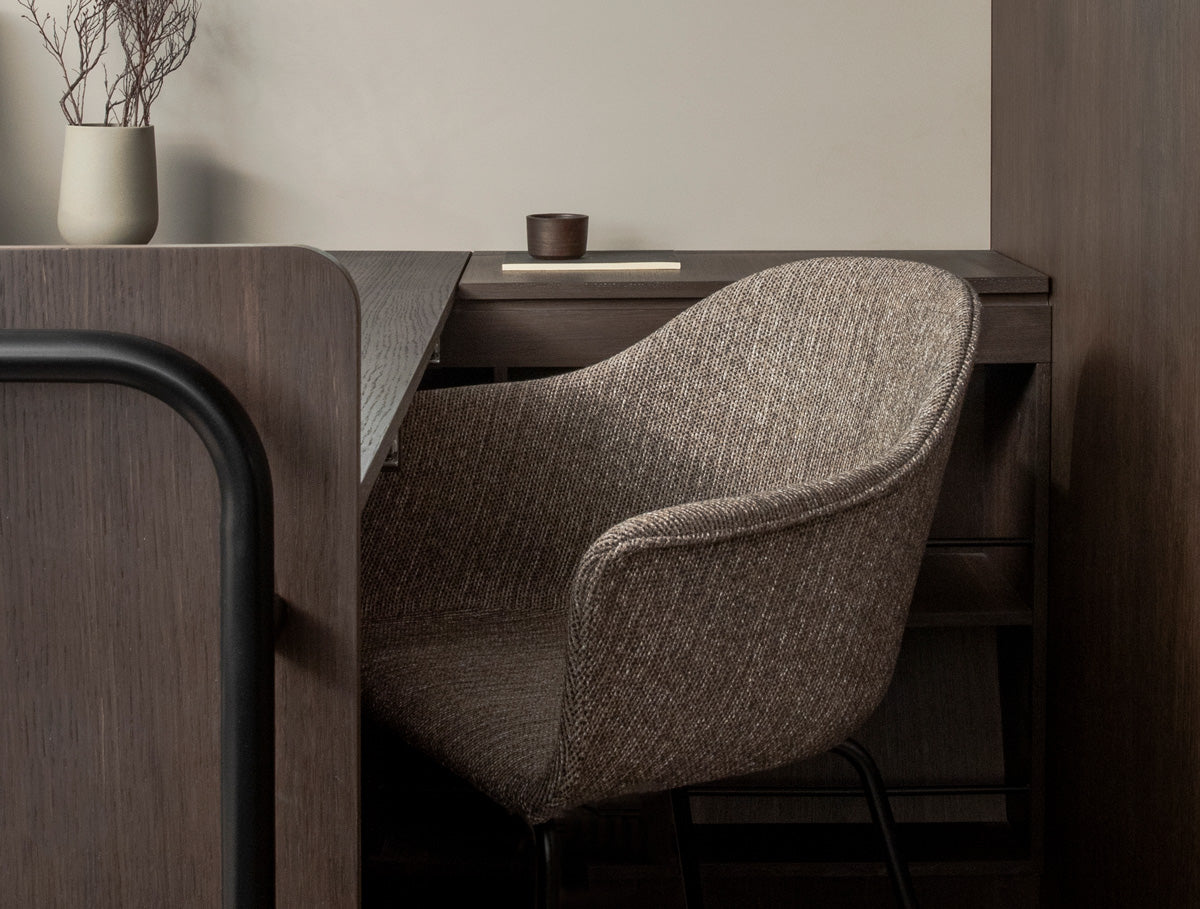To keep in mind: space limit, weight of the material, and sliding. These are the main premises and differences when it comes to a yacht’s interior design, at least this is how it has been for the Danish architectural firm Norm Architects. That and securing everything using locks. The rest, despite being the first time they design a boat, keeps its working structure as usual, using natural materials, subtle and earthy colors, and details that highlight the space.
Its minimalist aesthetic escalated to adapt to this boat’s interior, 20 meters long, by eliminating the unnecessary decoration and simplifying everything in order to get a simpler frame, following the natural curves of the ship. “We name our aesthetic or design philosophy ‘soft minimalism’. This is not new or modern, for centuries people have chosen minimalism as a way of achieving luxurious interiors, since eliminating the irrelevant items means you emphasize what is important”, the architects tell us.

Bella is the first construction of the Y/Yachts Y7 model. It was developed along with US naval architect Bill Trip and manufactured in Greifswald, Germany by sailor and constructor Michael Schmidt Yachtbau. Note to sailors: the aerodynamic silhouette together with the Scandinavian style has a competitive sailing performance, without losing style. But the greatest challenge, when it comes to design, its creators tell us, were the many restrictions imposed by a defined space. They wanted to minimize the classic rounded edge, as well as cabinets and other “wasted” spaces, which are produced when working in an irregular way. Also, they left behind the famous brass and glossy wood (in addition to other typical items), defying the general comprehension of a boat interior. “We try to translate our focus from architecture for interiors, the aesthetic, and minimal materiality to configurations and restrictions, by offering a warm sensation at the same time through tactile surfaces, natural materials, and matte finishes”.
First purpose of the project: to create a homely feeling and not just the interior of a boat; a subtle interior, discreet, comfortable, and filled with details.
The warm environment was achieved thanks to wood veneer, blackened steel architectural hardware, and thick fabrics. The tone-on-tone colors were used to create a soft and moderate ambiance. The illumination emphasizes the atmosphere even further, with a calm and cozy configuration, by adding built-in lamps in shelves and closets.

The details that embellish design are behind every shape, behind the quality, the craftsmanship, and elements; for example, the doors are designed with seamless frames, these are simple details, which make them sharp, thus avoiding disturbing elements.
Wood in dark tones was used for different accessories under the yacht’s deck, such as kitchen cabinets, bedroom closets, and the dining table. The same wood has been also used for creating a dividing wall that hides a small working desk.
Pieces of furniture, like chairs or armchairs, were upholstered with fabrics in hues like oatmeal, which perfectly contrast against the door handles and light switches, made with blackened steel.
“It is not about designing less products, or a lifeless living room. It is about creating soft and aerodynamic shapes, which invite you to participate in them. Places with welcoming spaces. Products which not only meet their function, but also bring joy. It is an attempt for balancing the visual, the tactile, and the sensory in order to create the unusual”.

An almost mandatory question is related to the future vision that they, as architects, have on yachts, their shape, their movement in, for example, 50 years, and undoubtedly, “we trust that there will still be ships that follow the industry’s trend, with a clear evolution of spaces towards hybridization, using a traditional aesthetic in a completely different environment, just as it happens in hotels, which increasingly look like homes, or a home that looks like a hotel; the bathrooms look like spas, offices and cafés and some shops resemble galleries, and a long etcetera follows”, Peter Eland and Linnea Ek Blæhr share with Container.
For now, what is clear is the homely feeling that goes from the most simple features to the engineering, which allows for a 28.5-ton yacht, to sail softly in the high seas.





